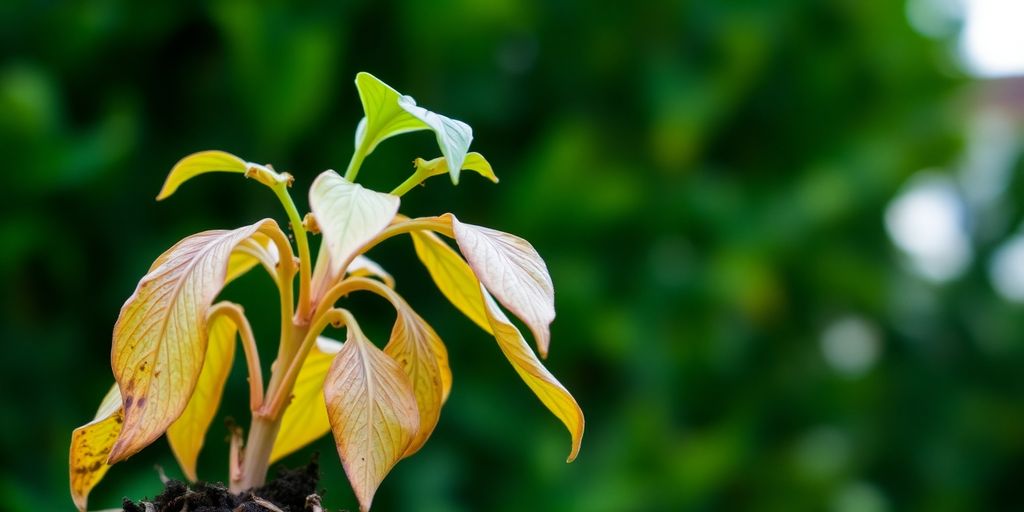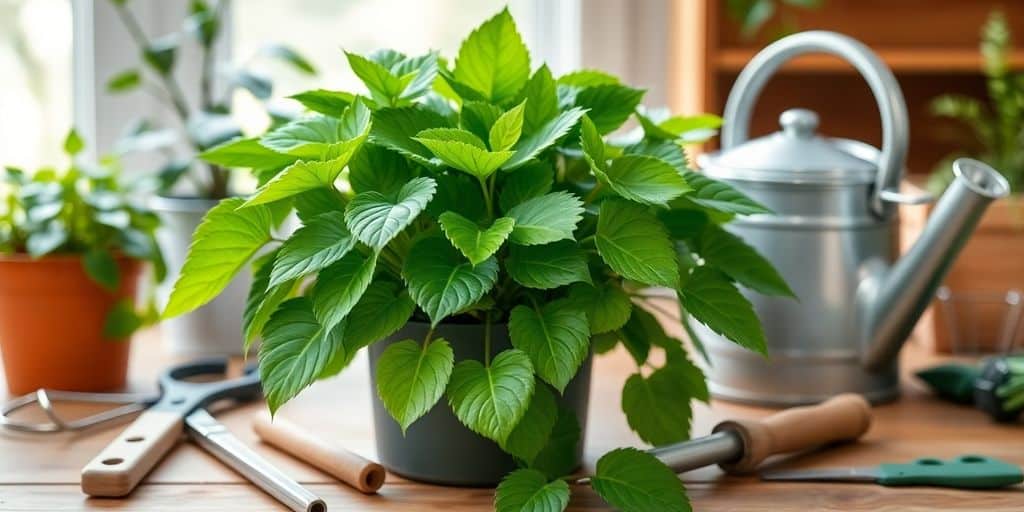How to revive a wilting plant is a question every plant lover faces at some point. Seeing drooping leaves or dry stems can be alarming, but it doesn’t always mean the end. With quick action and the right care, many plants can bounce back.
Wilting can be caused by several factors—too much water, too little, poor light, or even stress from repotting. Identifying the cause is the first and most important step. Once you know what’s wrong, recovery becomes much easier.
Even beginners can successfully restore a struggling plant with a bit of patience. The key is to observe closely and respond with simple, targeted care. Often, small adjustments can lead to a full recovery.
Wondering where to start? This guide will walk you through essential tips to help bring your plant back to life. Let’s turn that wilt into a fresh, healthy green glow.
Key takeaways
- Identify the cause of wilting by checking watering habits and looking for pests.
- Adjust your watering techniques and ensure your plant gets the right light and nutrients.
- Establish a consistent care routine and keep an eye out for any signs of distress.
Identifying the cause of wilting

So, you’ve got a plant that’s looking a little sad, huh? Wilting is a pretty common problem, and honestly, I’ve been there more times than I’d like to admit. The first step to bringing your plant back to life is figuring out why it’s wilting in the first place. It’s like being a plant detective, y’all!
Assessing watering habits
Okay, let’s talk water. This is usually the first thing I check. Are you giving your plant enough to drink, or are you drowning it? Believe it or not, both underwatering and overwatering can cause wilting.
- Underwatering: Stick your finger in the soil. If it feels bone dry a couple of inches down, your plant is probably thirsty. The leaves might also feel crispy.
- Overwatering: The soil feels soggy, and the leaves might be yellowing or drooping. Root rot is a real danger here, and that’s bad news for your plant.
- Drainage: Make sure your pot has drainage holes! If the water can’t escape, the roots will sit in water and rot. I learned that the hard way with my first fern.
Checking for pests and diseases
Alright, if the watering seems okay, it’s time to play CSI: Plant Edition. Grab a magnifying glass (if you have one) and really look at your plant. Pests and diseases can definitely cause wilting, as they mess with the plant’s ability to absorb water and nutrients.
- Pests: Look for tiny bugs on the leaves and stems. Spider mites, aphids, and mealybugs are common culprits. You might also see sticky residue or webbing.
- Diseases: Check for spots, discoloration, or mold on the leaves. Root rot, as mentioned earlier, is a common disease that can cause wilting.
- Other signs: Sometimes, the problem isn’t obvious. Look for unusual growth patterns or deformities, which could indicate a problem.
Steps to revive a wilting plant
Okay, so your plant’s looking a little sad, huh? Don’t sweat it, happens to the best of us. I’ve definitely had my fair share of droopy drama queens. Here’s what I usually do to bring ‘em back from the brink:
Adjusting watering techniques
First things first, let’s talk water. Getting the watering right is honestly half the battle. Are you drowning it, or is it drier than a popcorn fart?
- Overwatering: If the soil’s soggy and the leaves are yellowing, you’re probably overdoing it. Let that soil dry out, friend. Maybe even repot it with some fresh, well-draining soil. I’ve learned the hard way that some plants are real divas about drainage.
- Underwatering: Soil cracked and pulling away from the pot? Leaves crispy? Time for a good soak. I sometimes put the whole pot in a tub of water for an hour or so. It’s like a spa day for plants. Then, get on a regular watering schedule – a soil moisture meter can be a lifesaver here.
- Water Quality: Tap water can sometimes be harsh. If you’re in doubt, try using filtered water or letting tap water sit out for 24 hours before using it.
Providing proper lighting and nutrients
Alright, water’s sorted, now let’s think about sunshine and snacks. Plants need light to make their food, and nutrients to, well, thrive.
- Lighting: Is your plant getting enough light? Too much? Too little? Check what kind of light your plant prefers (direct, indirect, low light) and move it accordingly. Sometimes just shifting it a foot or two makes all the difference. I once had a fern that hated being near the window – go figure!
- Nutrients: If your plant’s been in the same pot for a while, the soil might be depleted. A little plant food can work wonders. Just don’t overdo it, or you’ll risk burning the roots. I usually go for a diluted solution every few weeks during the growing season.
- Remove Dead Stuff: Cut off any dead or dying leaves and stems. It’s like giving the plant a fresh start. Plus, it looks way better.
Maintaining plant health after revival

Okay, so you’ve nursed your plant back from the brink – awesome! But the job’s not quite done. Think of it like recovering from a bad cold; you need to keep up the good habits to stay healthy. Here’s how I keep my plants thriving after a revival:
Establishing a consistent care routine
Consistency is key, y’all! Plants are creatures of habit, just like us. Once you’ve figured out what your plant likes, stick to it. I’ve found that setting reminders on my phone really helps. Here’s what my routine usually looks like:
- Watering: Check the soil moisture every few days. Don’t just water on a schedule; water when the plant needs it. I usually stick my finger about an inch into the soil to check. If it feels dry, it’s watering time.
- Fertilizing: During the growing season (spring and summer), I feed my plants every month or so with a diluted liquid fertilizer. I’ve burned a plant or two by over-fertilizing, so I always err on the side of caution.
- Lighting: Make sure your plant is getting the right amount of light. Too much direct sun can scorch the leaves, while not enough light can lead to weak growth. I usually rotate my plants every week to make sure all sides get even light exposure.
Monitoring for signs of distress
Even with a solid routine, things can still go wrong. That’s why it’s important to keep a close eye on your plants. Catching problems early can make all the difference. Here are some things I watch out for:
- Yellowing leaves: This can be a sign of overwatering, underwatering, nutrient deficiencies, or pests. I usually start by checking the soil moisture and then inspect the leaves for any signs of bugs.
- Drooping leaves: This can also be caused by a variety of factors, including lack of water, too much sun, or root rot. I usually give the plant a good watering and move it to a shadier spot to see if that helps.
- Spots on leaves: These can be a sign of fungal or bacterial infections. I usually isolate the affected plant and treat it with a fungicide or bactericide.
If you notice any of these signs, don’t panic! Just take a deep breath, do some research, and adjust your care routine accordingly. With a little bit of attention, your plant will be back to its old self in no time. And remember, even experienced plant parents like me have setbacks. It’s all part of the learning process!
Final thoughts on reviving your plant
So, there you have it! Reviving a wilting plant isn’t as daunting as it seems. With a bit of observation and care, you can turn things around. Remember to check your watering habits, adjust the light, and keep an eye out for pests.
It might take some time, but don’t lose hope. Your plant can bounce back, and soon enough, you’ll see those vibrant leaves again. Just be patient and consistent with your care. Happy gardening!
Frequently asked questions
How can I tell if my plant is wilting due to underwatering or overwatering?
If your plant’s leaves are drooping and the soil feels dry, it might be underwatered. On the other hand, if the leaves are yellowing and the soil is soggy, it could be overwatered.
What should I do first when I notice my plant wilting?
Start by checking the soil moisture. If it’s dry, water your plant. If it’s too wet, let it dry out before watering again.
How long does it take for a wilting plant to recover?
It usually takes a few days to a couple of weeks for a plant to show signs of recovery after you adjust its care.
